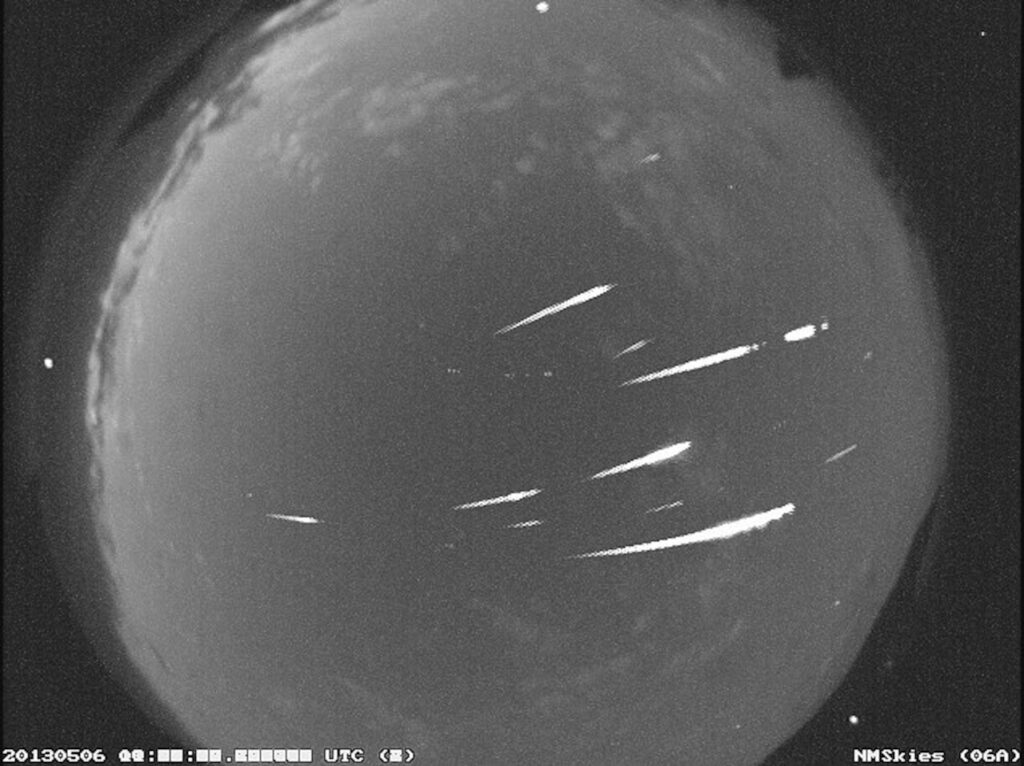Debris from one of the most famous comets is about to speed across the night sky.
The Eta Aquarid meteor shower is expected to reach its peak on Sunday, according to the Old Farmer’s Almanac. These fast meteors are best seen during the pre-dawn hours — between midnight and about an hour before morning twilight — in the direction of the constellation Aquarius, NASA stated.
Reaching speeds of 148,000 mph, the Eta Aquarids leave behind “trains,” or incandescent pieces of debris coming from each meteor as they reach Earth’s atmosphere, the space agency added. During the meteor shower’s peak, as many as 50 meteors can be seen, while as many as 10 can be seen within an hour when not during the meteor shower’s peak.
Like other meteor showers, the Eta Aquarids are best seen far from any light pollution emanating from a town or city. In preparation, bring a sleeping bag, blanket or lawn chair while looking up and facing east, NASA suggested.
While looking, the space agency advises people to stay patient as their eyes adjust to the darkness and the meteors become more visible. The human eye takes about 30 minutes to adjust to the dark.
The Eta Aquarids originate from Halley’s Comet, which was last seen in the night sky in 1986, according to NASA.
First seen in 1705 by astronomer Edmund Halley, its fame stems from being the first comet understood to be a repeat visitor as it makes cyclical approaches toward the sun. Halley’s Comet travels around the sun roughly every 76 years. It’s expected to be seen again from Earth in 2061.


